Russia’s most beautiful church: The Resurrection Cathedral at Borisoglebsk
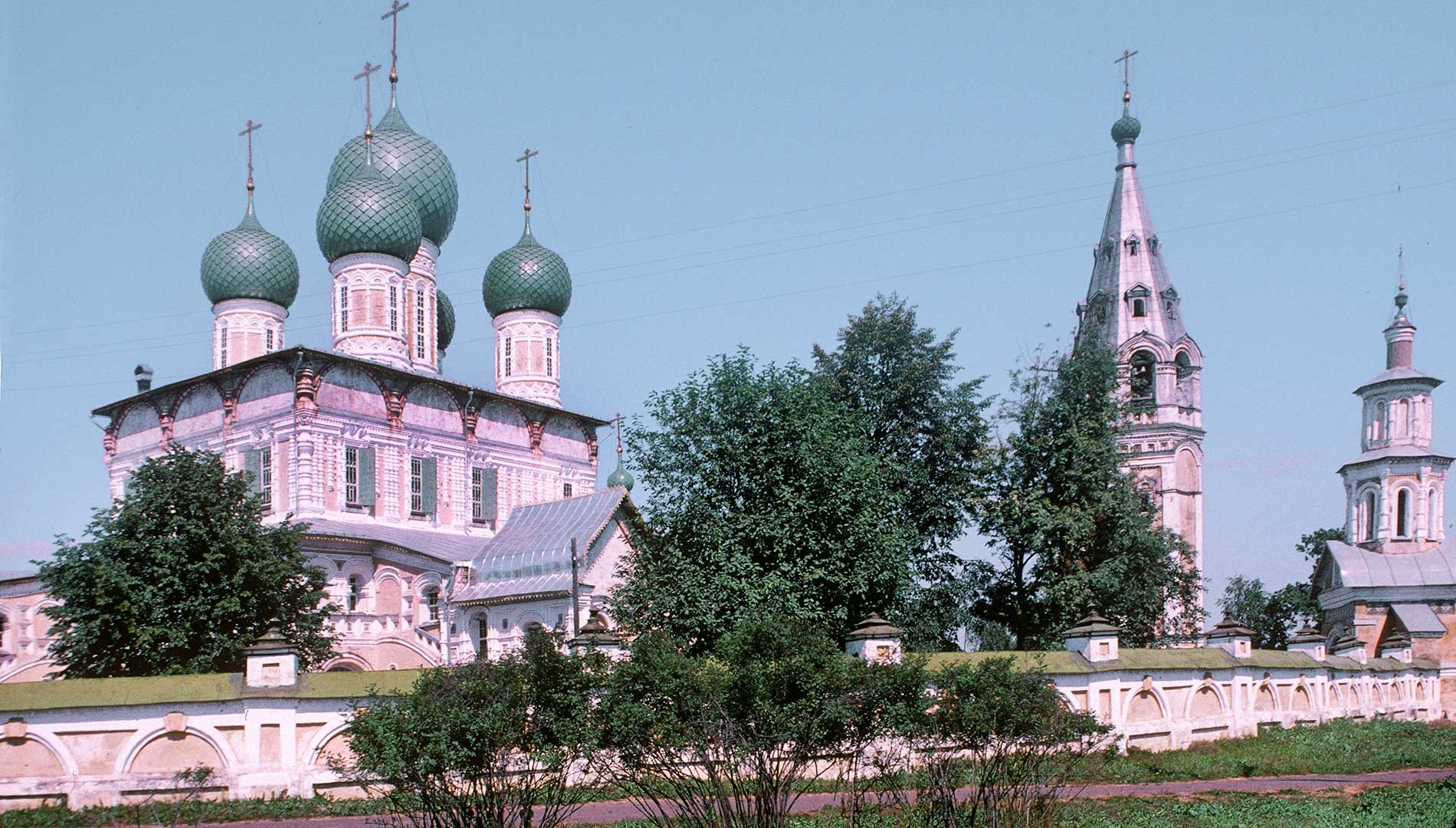
Cathedral of the Resurrection. Southwest view. Right: bell tower & Holy Gate. July 25, 1997
William BrumfieldAt the beginning of the 20th century, the Russian chemist and photographer Sergei Prokudin-Gorsky devised a complex process for vivid, detailed color photography. His vision of photography as a form of education and enlightenment was demonstrated with special clarity through his photographs of architectural monuments in historic sites throughout the Russian heartland
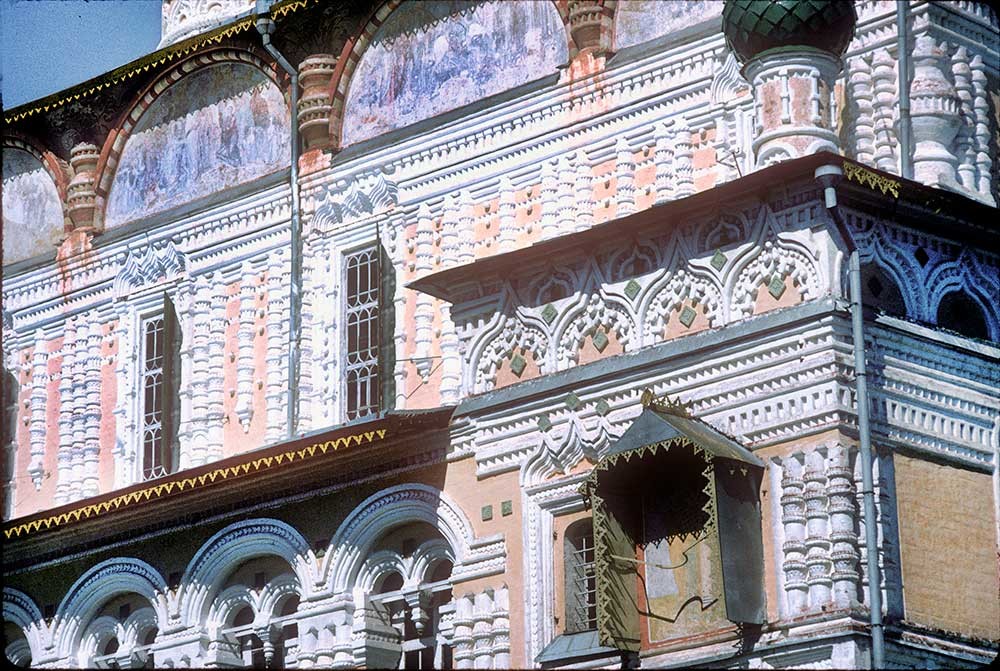
Tutaev (Borisoglebsk). Cathedral of the Resurrection. South facade with St. Nicholas Chapel. July 25, 1997
William BrumfieldAmong the many river towns that he visited in the summer of 1910, one of the most picturesque is now known as Tutaev, located some 25 miles northwest of the city of Yaroslavl. Tutaev (population around 40,000) is, in fact, two places, situated opposite each other on the Volga
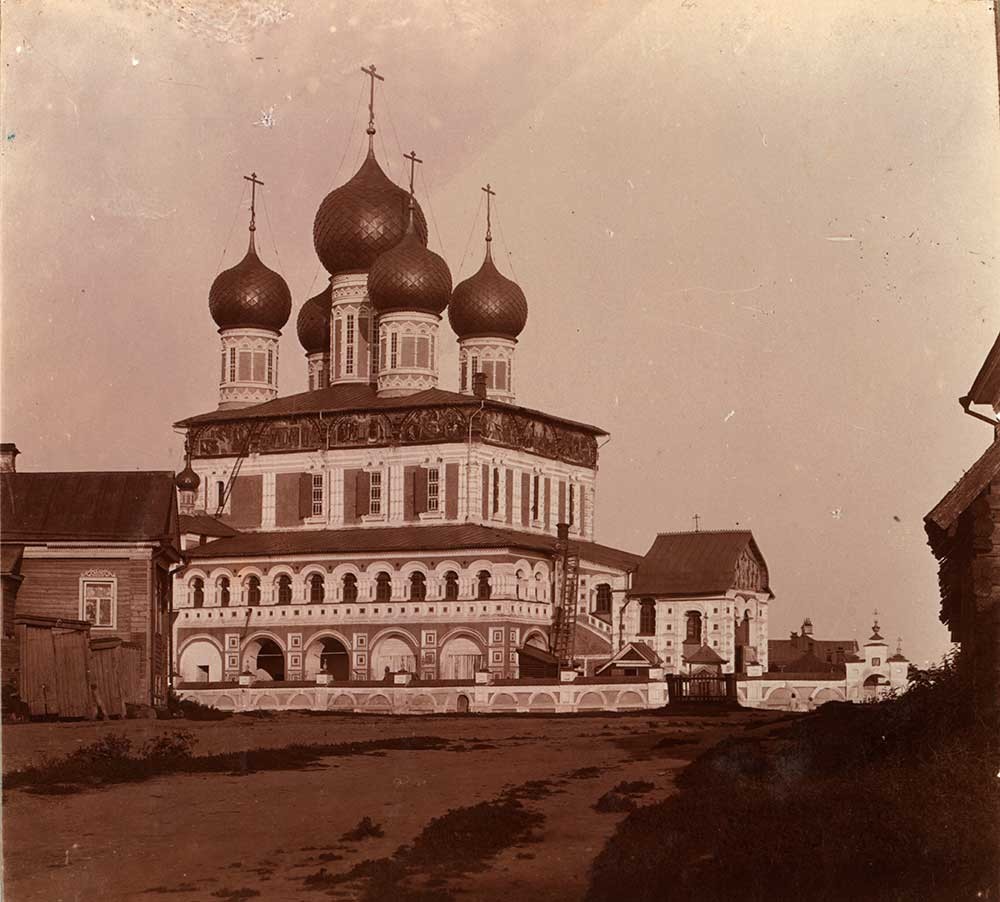
Cathedral of the Resurrection. Northwest view with Chapel of Sts. Peter & Paul. Late summer 1910
Sergei Prokudin-GorskyCenter of trade and old belief
The origins of Borisoglebsk evidently predate the Mongol sack of Yaroslavl in 1238. Its name derives from a local church dedicated to two early saints, Princes Boris and Gleb, martyred during a Kievan dynastic struggle in the early 11th century. By the 15th century, the settlement was referred to as the Borisoglebsk Fishing Quarter (
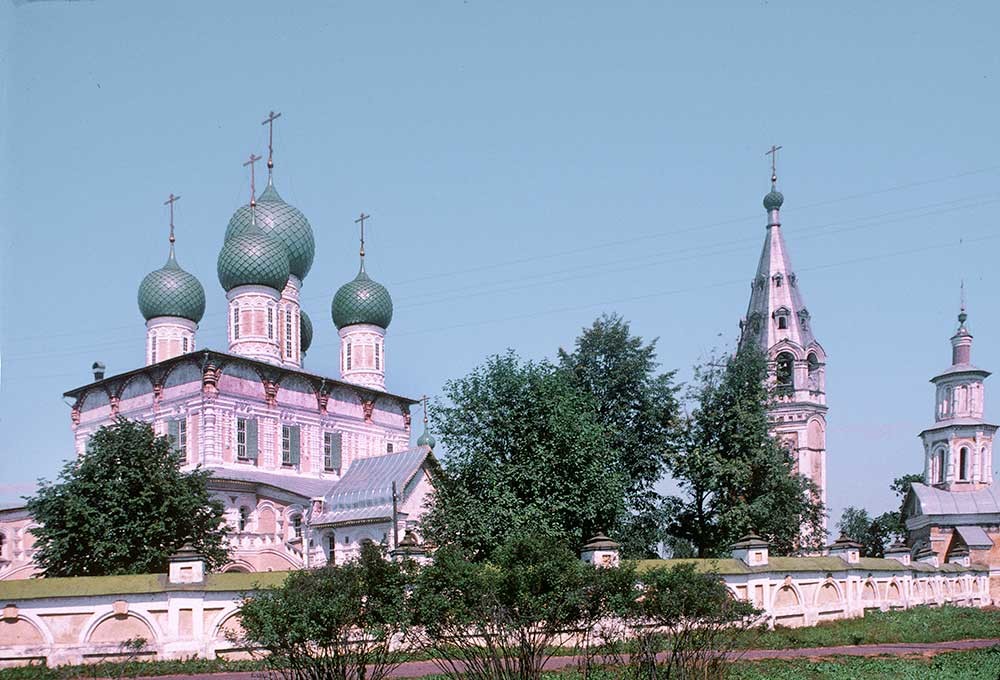
Cathedral of the Resurrection. Southwest view. Right: bell tower & Holy Gate. July 25, 1997
William BrumfieldThis combination of prosperity and religious motives led to the construction of the magnificent Cathedral of the Resurrection. The complex structure had its origins in a brick church built in 1652 on the site of wooden Church of Sts. Boris and Gleb and dedicated to the revered Smolensk Icon of the Virgin (also known as the Hodegetria Icon).
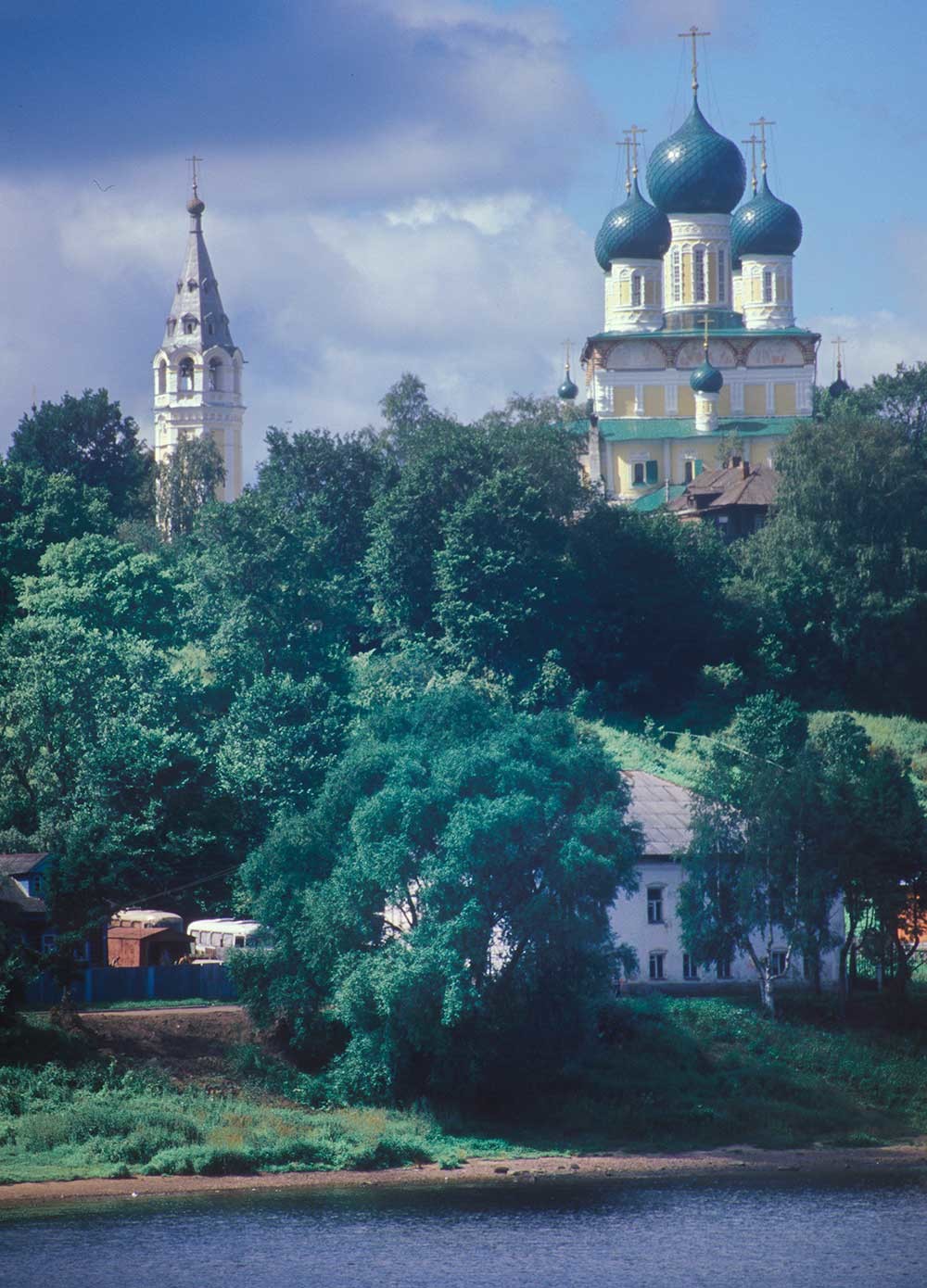
Cathedral of the Resurrection & bell tower. East view from Volga River. July 15, 2007
William BrumfieldIn 1670, the partial collapse of the Smolensk Icon Church initiated the rebuilding of a vastly larger shrine dedicated to the Resurrection. The basic part of its ground level consisted of walls from the earlier church, along with the altar dedicated to the Smolensk Icon. (Russian Orthodox churches often have multiple altars, each with its own dedication.)
This lower level served for worship while the rebuilding was underway. It had secondary altars dedicated to John the Baptist (in the north) and St. Charalambos of Magnesia, martyred apparently during the reign of Septimius Severus (193-211). After construction of the entire complex was completed toward the end of the decade, the lower level continued to be used for winter services because
Classic example of church architecture
With its completion in 1678, the Resurrection Cathedral became a proud, graceful landmark overlooking the Volga. My photograph from the river in 2007 shows that even with summer foliage the cathedral and its lofty cupolas are clearly visible
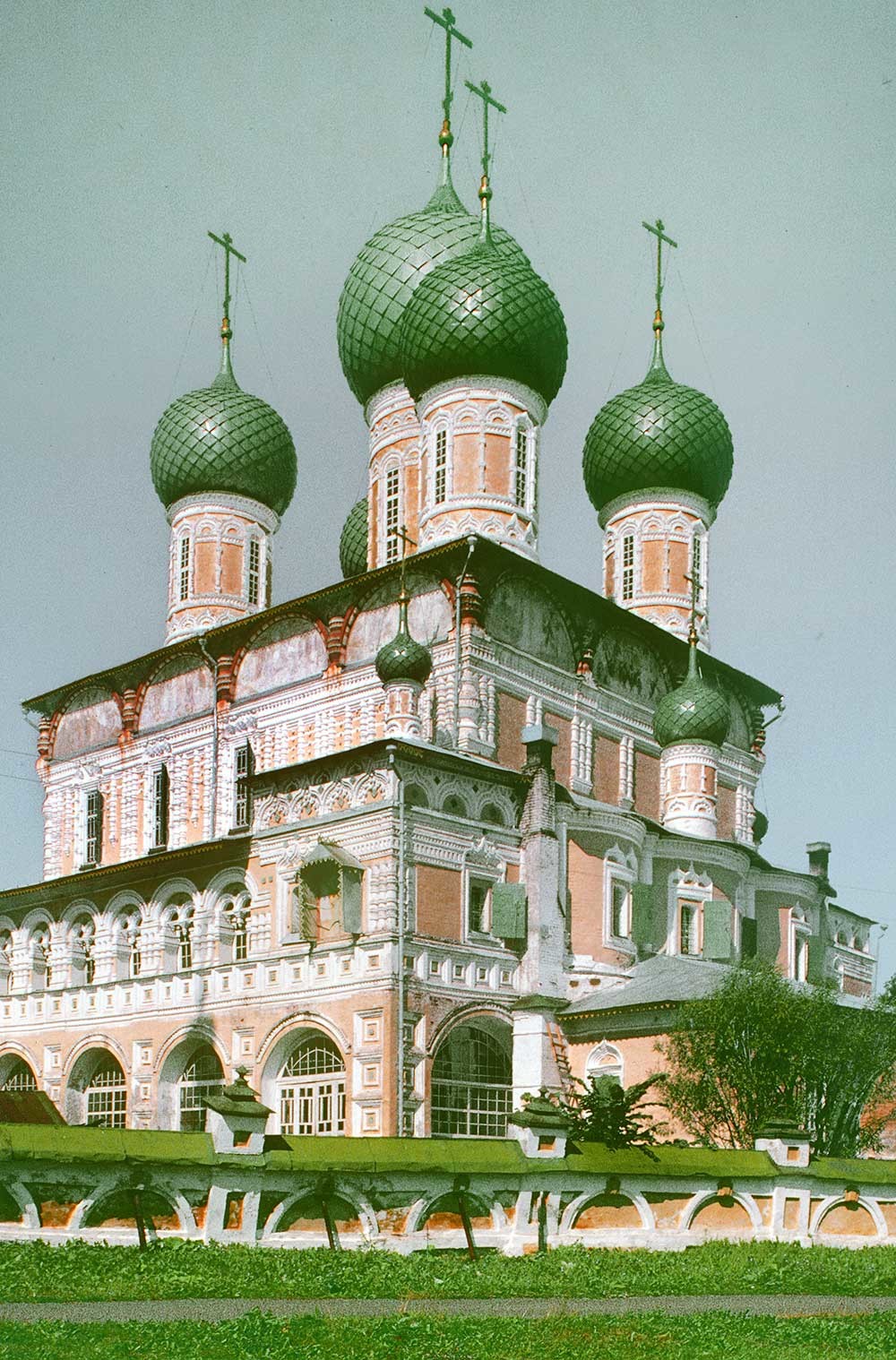
Cathedral of the Resurrection. Southeast view with St. Nicholas Chapel. July 25, 1997
William BrumfieldThe basic structure, square in plan, rises in a pattern formed by large windows separated with groups of attached ornamental columns painted white on a yellow stuccoed surface. Beneath the roof cornice
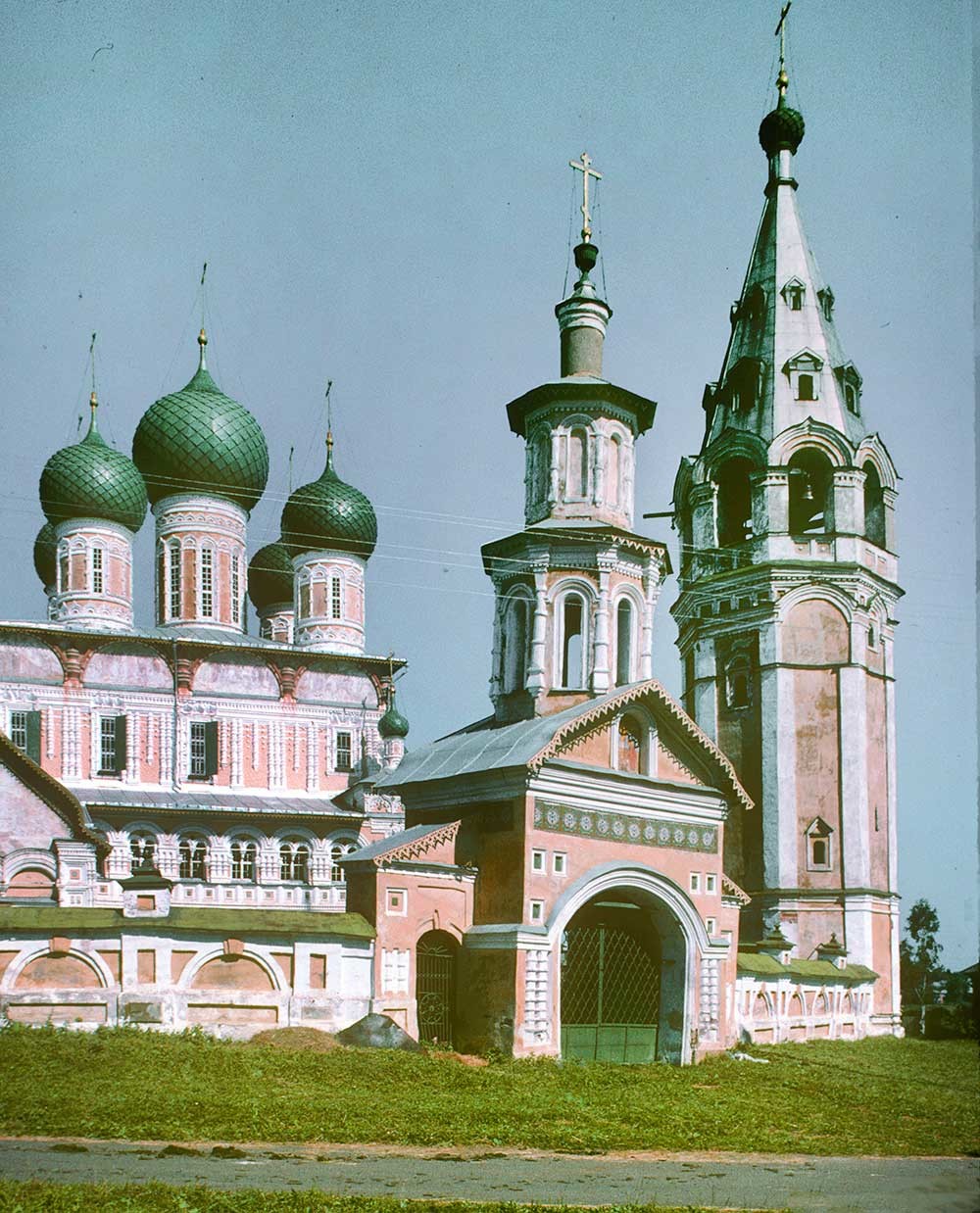
Cathedral of the Resurrection. South view with Holy Gate & bell tower. July 25, 1997
William Brumfield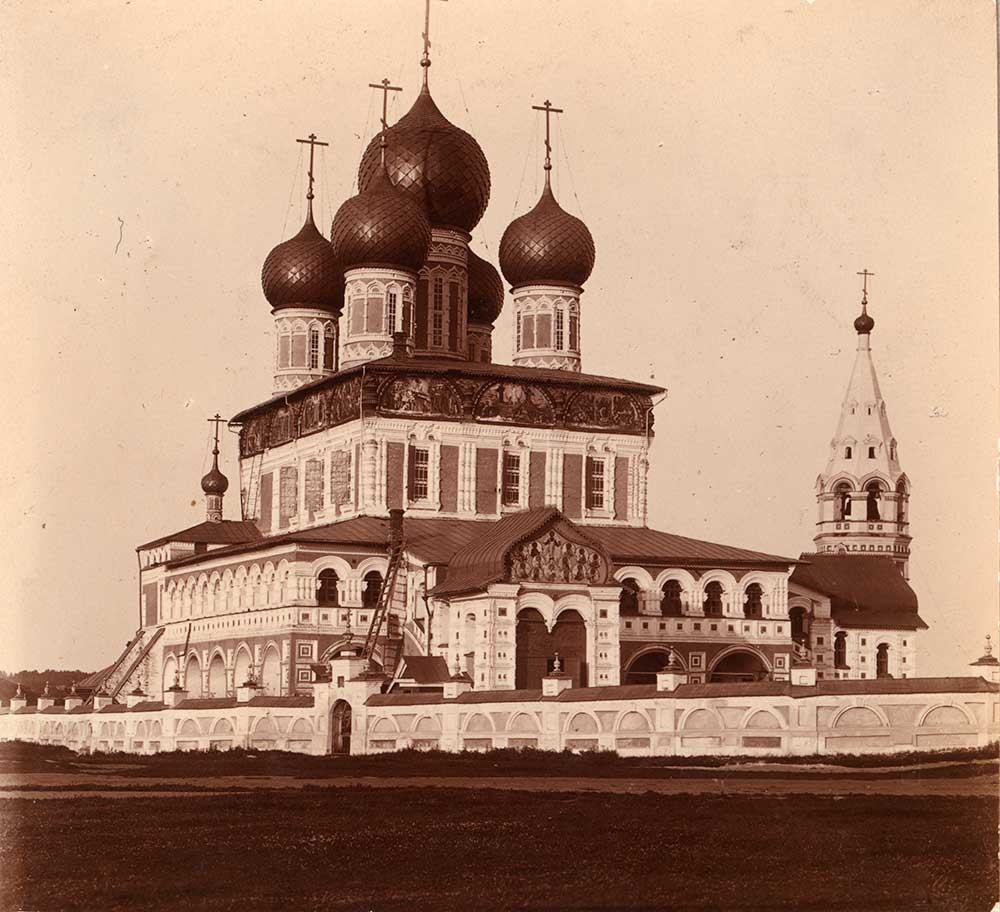
Cathedral of the Resurrection. West view. Right background: bell tower. Late summer 1910
Sergei Prokudin-Gorsky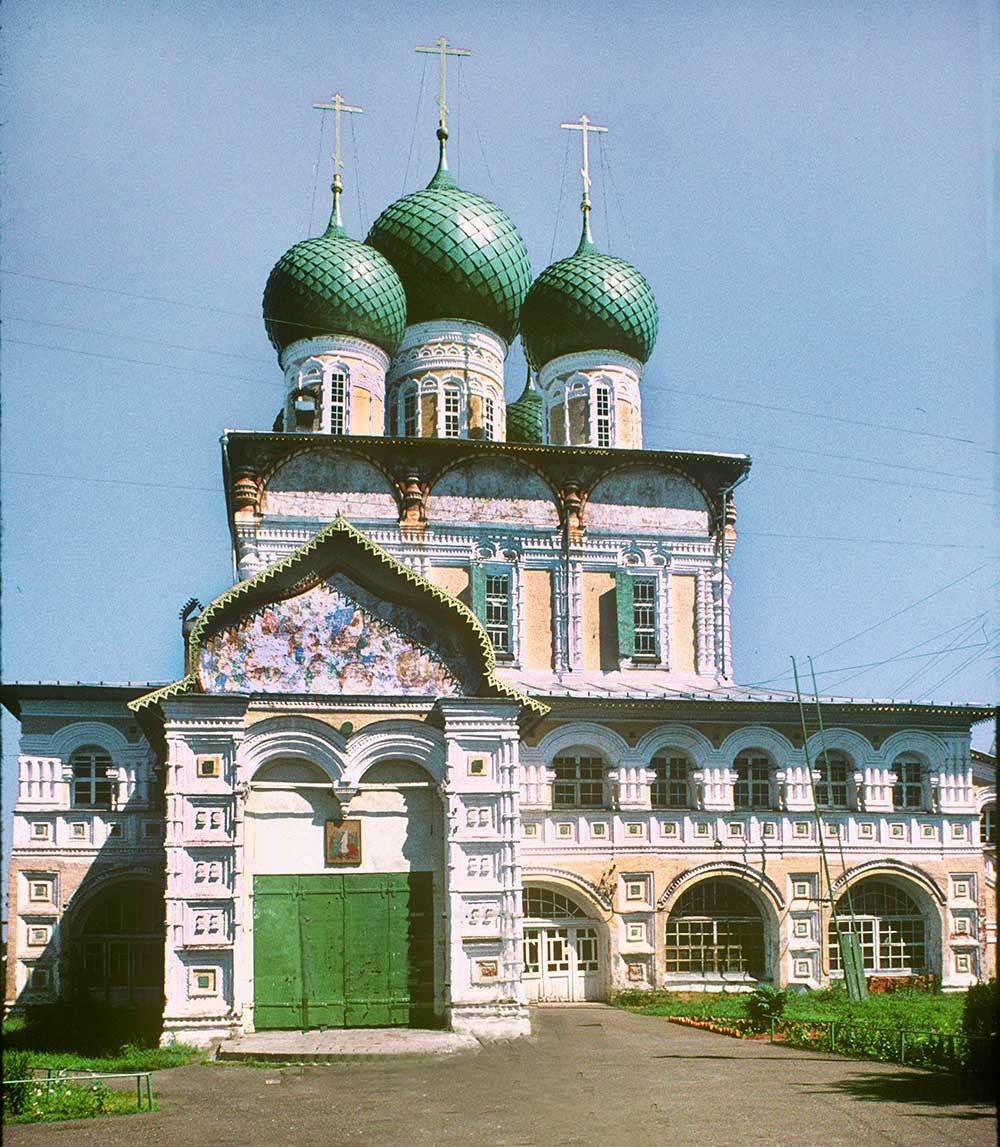
Cathedral of the Resurrection. West view. July 25, 1997
William BrumfieldProtecting a sacred monument
This grand edifice, with its intricate façade ornamentation, was photographed by Prokudin-Gorsky in 1910 from both the north and the west. Unfortunately, his collection at the Library of Congress contains none of his glass plate negatives of the Tutaev monuments
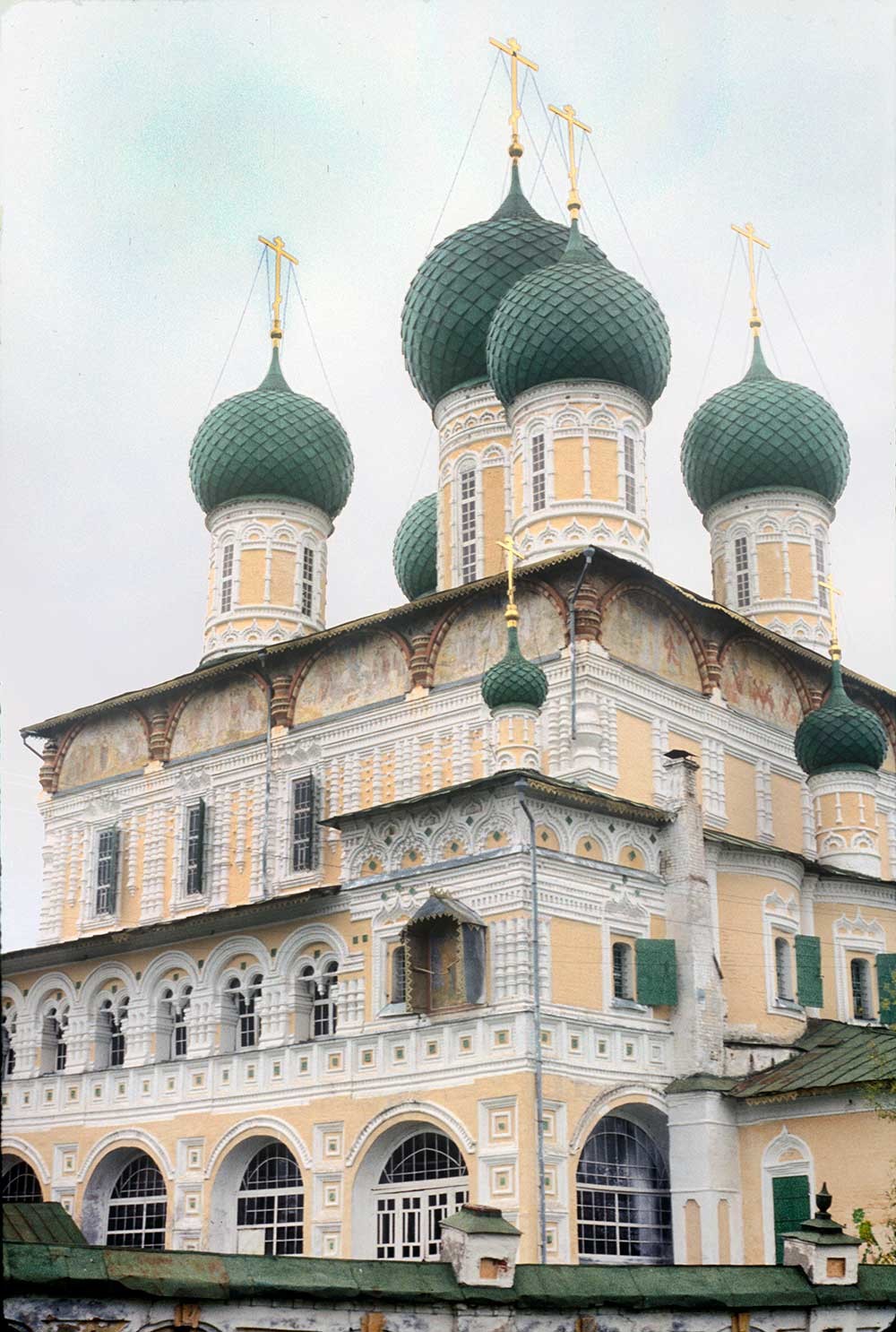
Cathedral of the Resurrection. Southeast view with St. Nicholas Chapel. October 3, 1992
William Brumfield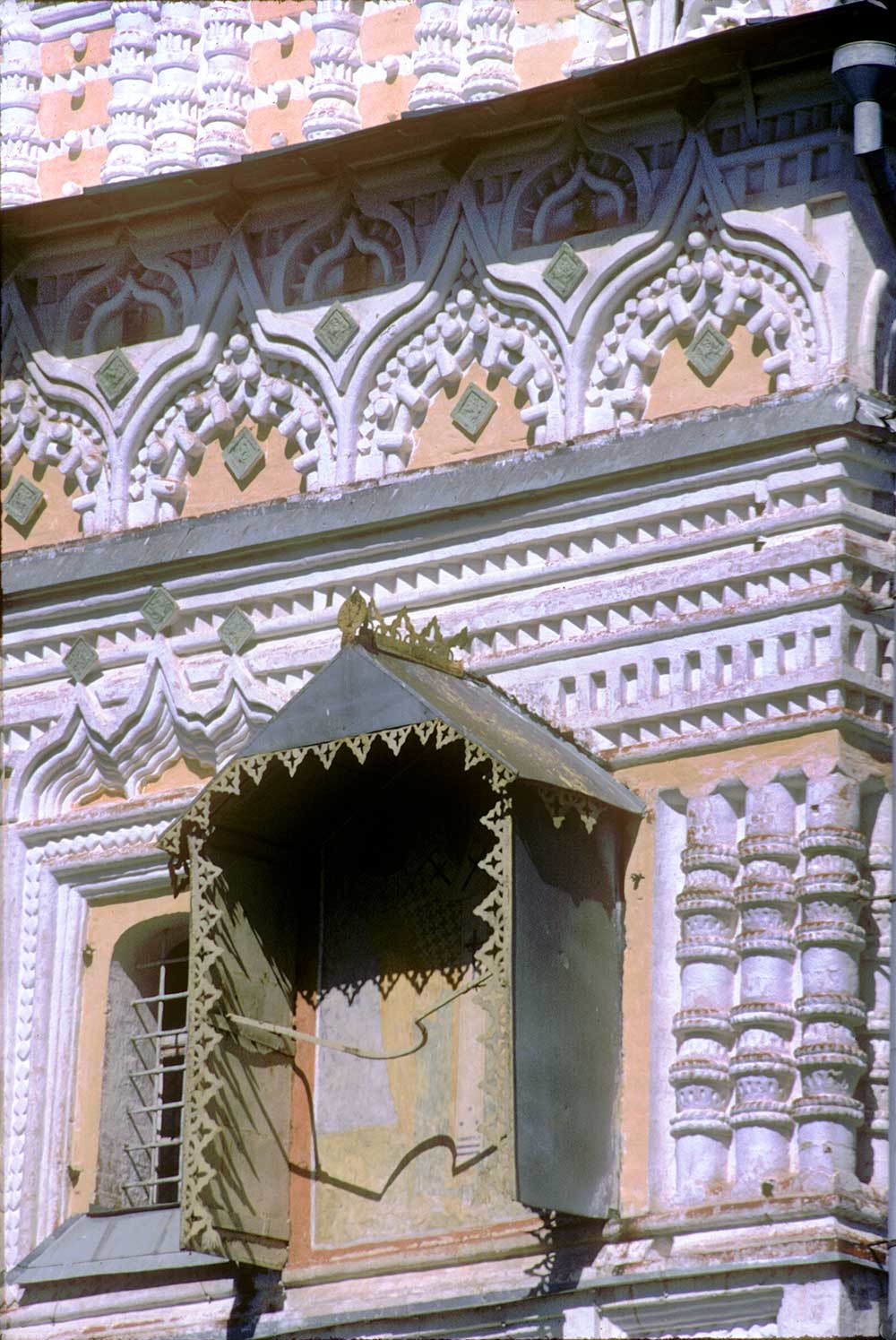
Cathedral of the Resurrection. South facade with decorative details of St. Nicholas Chapel. William Brumfield. July 25, 1997
William Brumfield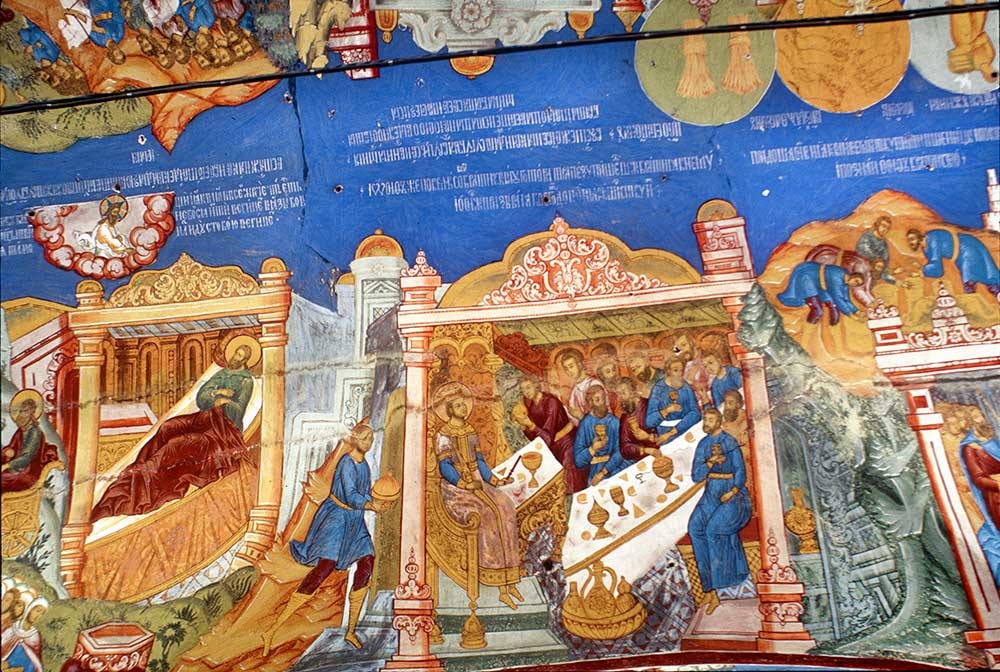
Cathedral of the Resurrection. North gallery, ceiling frescoes from Book of Genesis (Jacob & his sons). July 25, 1997
William BrumfieldHaving survived relatively intact from the Soviet period, the Resurrection Cathedral is reputed to have miraculous healing powers by locals as well as pilgrims. The joy of beholding the landmark’s surpassing beauty has, perhaps, a therapeutic value for all.
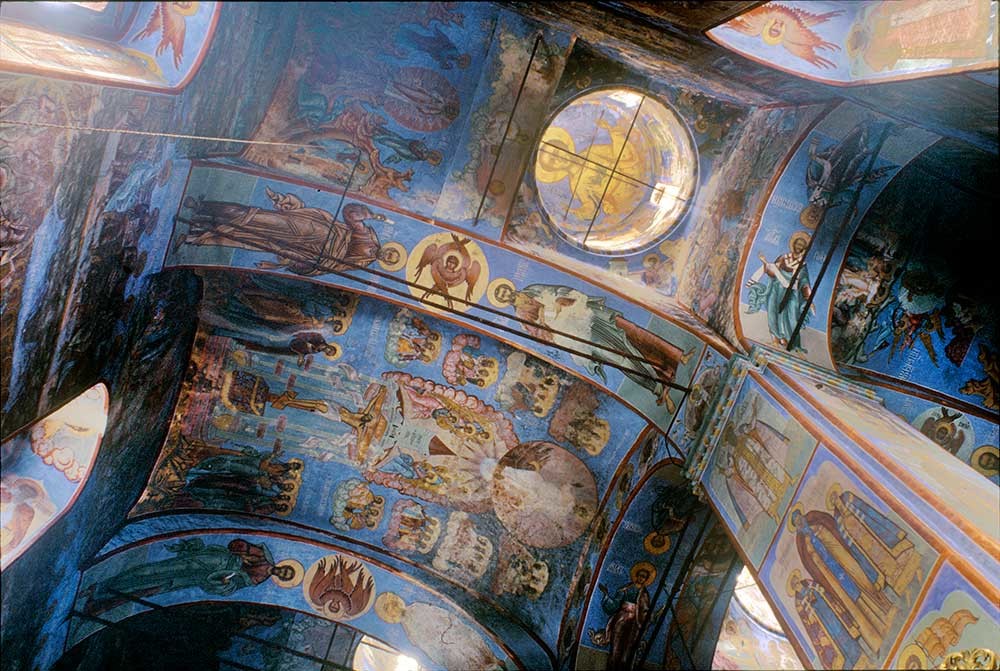
Cathedral of the Resurrection. Frescoes on west ceiling vault and piers. July 25, 1997
William BrumfieldIn the early 20th century the Russian photographer Sergei Prokudin-Gorsky devised a complex process for color photography. Between 1903 and 1916 he traveled through the Russian Empire and took over 2,000 photographs with the process, which involved three exposures on a glass plate. In August 1918, he left Russia and ultimately resettled in France with a large part of his collection of glass negatives. After his death in Paris in 1944, his heirs sold the collection to the Library of Congress. In the early 21st century the Library digitized the Prokudin-Gorsky Collection and made it freely available to the global public. A number of Russian websites now have versions of the collection. In 1986 the architectural historian and photographer William Brumfield organized the first exhibit of Prokudin-Gorsky photographs at the Library of Congress. Over a period of work in Russia beginning in 1970, Brumfield has photographed most of the sites visited by Prokudin-Gorsky. This series of articles juxtaposes Prokudin-Gorsky’s views of architectural monuments with photographs taken by Brumfield decades later.
If using any of Russia Beyond's content, partly or in full, always provide an active hyperlink to the original material.
Subscribe
to our newsletter!
Get the week's best stories straight to your inbox